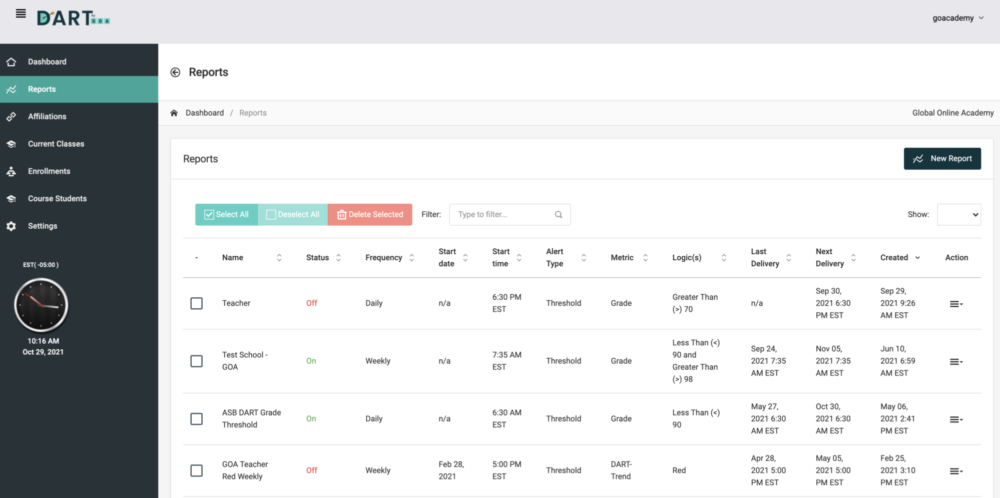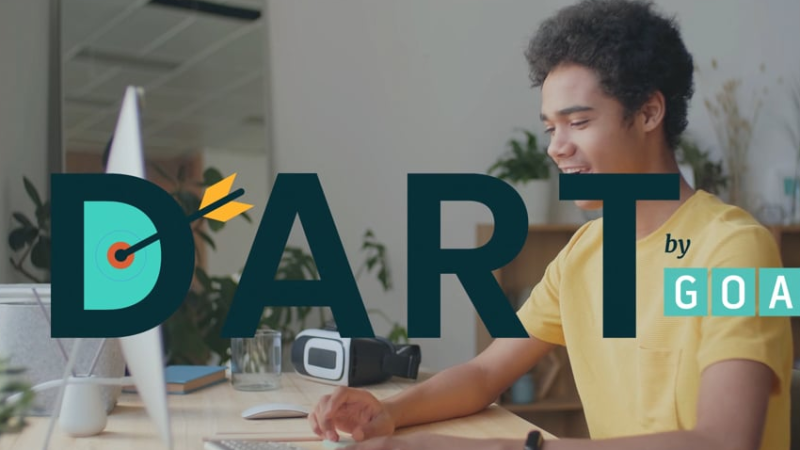How to Use Data to Humanize Student Support
An important outcome of pandemic education is an increasing comfort level with online spaces and the large amount of student data that comes with them. An important question that’s also arisen: How might we use that data in a thoughtful, responsible way that helps improve learning outcomes for all students?
Leveraging data to support students offers both promise and peril. Rely on data too much, and one risks dehumanizing student support or entrenching implicit bias. Ignore data, and one loses a valuable tool that can help students grow and measure success. How might we take a middle road where we surface insights from data and use them to deepen the human element of student support?
At GOA we’ve created systems that surface data without allowing it to subvert our most crucial element in the student support chain: an empathetic and responsive faculty member. Being data-informed should not interfere with a dedication to relational learning; students must remain known, recognized, and included. Relational learning is the foundation of our student support system as our learners are included in and seen throughout the entire support process. To ensure that our focus is on the human element of support, GOA uses data to allow students and teachers to build relationships and not sort through a myriad of information.
LMS platforms collect valuable data, but it can be hard to find. Teachers, advisers, coaches, and other stakeholders need a “quick view” of student information to help them take data-informed actions. GOA’s system revolves around tools that pull vital metrics from the learning management system. Most importantly, it then places these metrics into the workflow of key student support advocates.
Our custom-built tool called DART (Data Action Reporting Tool) is used to deliver actionable information throughout the school. These systems are carefully embedded within existing student support systems to ensure that the people best equipped to pull on these threads can do so easily and in a human-centered manner.
GOA’s Data Action Reporting Tool
DART sends weekly analytics reports to students and teachers. Teachers can think through the students’ situations and create a student support communication that will alert the student and their support team members of a call to action: check-in, create a plan, commit to action, or communicate intentions. This communication has built-in automation that, if a student’s engagement remains a concern, will send communications with additional calls to action. The human element of our data and automation remains with our teachers and students. It’s the intentional building of relationships and including the student and their larger support team members in the process that allows the data to drive a relational student support system.

DART's dashboard allows schools to fully customize data reports, aligning the data to the time, student profile, and data type that would be most useful to the user.
We’ve shared DART with some of our member schools, including The Blake School, where Jennifer is Information Support Services Program Manager. At Blake, DART is a proactive tool for academic administrators in reviewing student performance trends and classes within the context of the Canvas Gradebook. Beyond reporting the current grade, DART also classifies a student's progress in a course over time. These analytical reports capture student performance at both ends of the spectrum, both students of concern and noteworthy students. Educators can use the data to create a proactive intervention and support plan well before the end of the marking period. Teachers can also use data to notice and celebrate student progress and achievement.
"As the 9th-grade learning specialist, I am constantly trying to keep 'tabs' on the performance of many students," said Mary Kirchoff, Blake's Director of Learning Support Services. "Prior to DART, I would go to each student’s Canvas page and look at grades. This was very time-consuming. Now, I receive a weekly report from DART that identifies any student who is earning below 80% in a class(es). Having this information helps me to respond more quickly to students who are falling behind."
At both GOA and Blake, DART has taught us that being data-informed doesn’t need to involve fancy charts or institutional researchers. It can start with simple metrics and a systemic approach. If it’s done in a way that creates an efficiency point for a student support team and gives it more time to work directly with students, it can be a huge win.
Other GOA schools that joined the DART pilot include Gilman School, Kent Denver School, The Downtown School, and Lake Highland Preparatory School. DART is available to all schools! Reach out to schedule a live demonstration of DART in action.
To learn more about developing a student-centered data strategy, read these articles:
- Relationships are the Foundation of Online Learning Design. Here’s How We Know.
- What Do Students Expect From Online Learning? We Asked Them.
- How to Cultivate Belonging in Online Learning
DART connects to your school's Learning Management System to produce customizable, user-friendly email reports. Inquire about bringing DART to your school.



